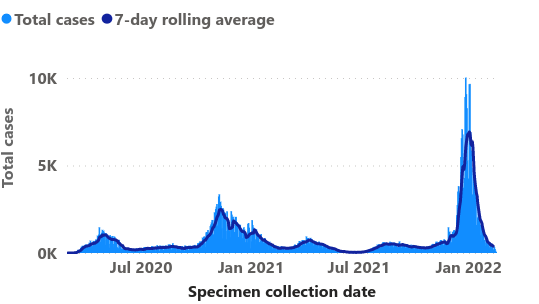The new Omicron variant can reinfect people who have had COVID in a matter of months

Statistics of COVID hospitalizations in Chicago from the official Chicago website
February 18, 2022
COVID has been a worldwide issue for the past two years, changing our ways of life: online vs in-person schooling, masks, policies for entry into each store, etc. It seems as though the virus continues to mutate, each strain becoming harder to detect than the last.
The newest variant of the omicron virus, named BA.2 and also known as the “stealth” virus, due to the fact that it shows up differently on COVID tests than the existing dominant type, is known as BA.1, and can reinfect people who have had COVID as little as a few months prior. Though this variant is more rare than the BA.1, it is far more easily transmissible, and easier to miss because the BA.2 is easier to miss if you don’t know what you’re looking for.
“One of the most significant unknowns about BA.2 is whether it can reinfect people who have already caught BA.1, meaning people could potentially catch COVID twice in just a couple of months,” Ed Brown writes in Newsweek.
It is entirely possible and much easier for people to get COVID again, even after vaccines, due to easier transmission, if they aren’t careful. Recently, as recently as January of 2022, there has been a significant spike in hospitalizations due to COVID in the United States. The easier transmission has caused a peak of hospitalizations of 154,250 coronavirus cases, but fortunately has dropped back down to a lower number of around 63,700 cases, the official website of Chicago states.
The CDC has changed their masking recommendations, instead recommending N95s as well as KN95s over regular surgical masks, as they are proven to be more effective in protecting the wearers as well as others against the new strain of the virus.
As our district transitions to mask-recommended, we will continue to watch as the changes affect how transmission of the virus, and, in turn, how it affects people.

